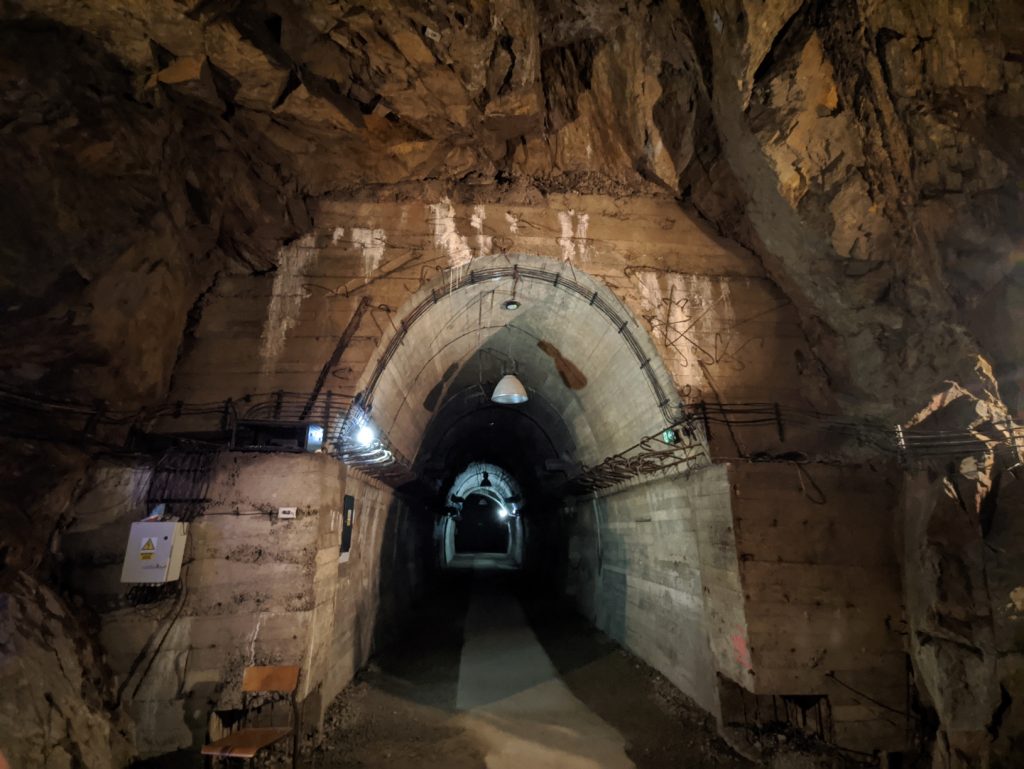
The majestic Książ Castle, in Lower Silesia, Poland, was built in the 13th century, it has one of the most spectacular views in the entire region, and a long and fascinating history that goes back to the Middle Ages until World War II, when they opened a series of tunnels under its structure.
During World War II, the Nazis built an extensive tunnel system under this castle, one of the main Polish tourist attractions. This underground wonder, which was previously used by the Institute of Geophysics of the Polish Academy of Sciences (IGF) to measure ground vibrations, is now open to the public. Visitors can now explore the 3,200 square meters of these underground spaces built by slaves from Nazi concentration camps.
Were these tunnels built to hide treasure, serve as underground weapons facilities, or possibly to house secret research facilities for new weapons systems? Some speculate that the famous, and already mythical, gold train of the Nazis may be hidden there. To this day, new sections of the tunnel system are still being discovered.
The underground tourist route, which extends for 500 meters to 50 meters under the largest castle in Książ, complements a previously opened route at a depth of 15 meters. In total, there are about two kilometers of tunnels and rooms under the castle, which were built by the Nazis starting in 1943 as part of the secret "Riese" project. The prisoners of the Gross-Rosen concentration camp were forced to work in these inhumane conditions, many of them dying there. It is believed that the Nazis had plans to build a new headquarters for Adolf Hitler in these underground rooms. Part of the tunnel system was filled in, including the elevator shaft that led directly from the castle into the depths.
What was the Riese project?
The Riese (German for giant) project was a large-scale construction project that began during World War II in Poland. This project, carried out by the Third Reich on the territory of present-day Poland, was located in the Owl Mountains region of Lower Silesia. The Riese project is surrounded by many mysteries due to the lack of definitive documentation on its purpose.
Riese's goal is believed to have been to create a series of underground bunkers for the German high command, including Adolf Hitler. The bunkers, believed to be used as military headquarters, research and development facilities, and possibly repositories for war treasures, were to be connected by a tunnel system.
Riese's seven underground structures were intended to be interconnected by an extensive system of tunnels and underground roads. Individual facilities at Riese were designated castles, suggesting their strategic importance and function as shelters.
The construction of the Riese project was in charge of Albert Speer, Minister of Armaments and War Production and director of the Todt Organization, as well as being a confidant of Hitler. For its construction, the Nazis used prisoners of war, many of whom died due to harsh working conditions and malnutrition.
At the end of World War II the project was abandoned. At the end of World War II, Poland was invaded by the forces of the USSR, which until 1989 had absolute control of the Castle and its underground labyrinths. Some speculate that the Soviets plundered the treasures hidden under the castle, for which reason they hid and disappeared all the documents that made reference to the purpose of the Riese project. Despite efforts to discover Riese's true purpose, many questions remain unanswered due to the lack of reliable documentation and multiple theories surrounding the project.
Today, parts of the Riese project are accessible to tourism, including the tunnel system under Książ Castle, allowing visitors to explore an intriguing piece of World War II history.
Latest Posts
